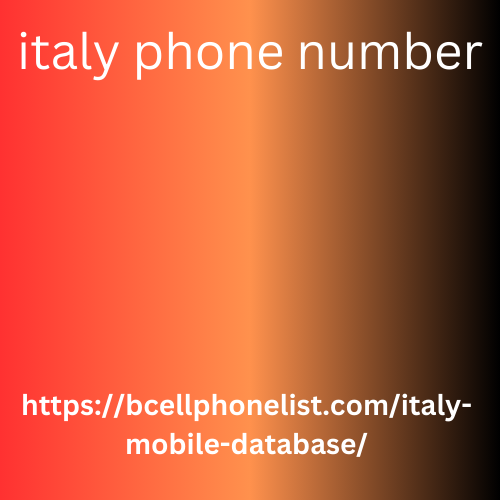Post by alimularefin63 on Jun 8, 2024 13:12:11 GMT 5
Why Google Push Notification Service is Failing: A Troubleshooting Guide
1. Introduction:
Push notifications have become an integral part of our daily italy phone number digital lives, enabling real-time updates and communication from various apps and services. Google Push Notification Service (FCM) stands out as one of the most widely used platforms for delivering these notifications efficiently across Android devices. However, encountering issues with push notifications not working can be frustrating for both users and developers alike. In this article, we'll delve into the common reasons why Google Push Notification Service might fail and explore troubleshooting steps to resolve them.
2. Understanding the Problem:
Before diving into troubleshooting, it's crucial to understand the potential causes behind Google Push Notification Service failures. These reasons can vary from technical glitches to misconfigurations within the app or server settings. Some common issues include:
Network Connectivity Problems: Unstable internet connections can prevent devices from receiving push notifications promptly.
Device Settings: Incorrect device settings, such as disabled notifications or restricted background data usage, can hinder push notification delivery.
App Configuration: Improper configuration of the app's Firebase Cloud Messaging (FCM) setup or outdated SDK versions can lead to notification failures.

Server-Side Errors: Issues with the server-side implementation, such as invalid API keys or server downtime, may result in push notification failures.
Battery Optimization: Aggressive battery optimization settings on some Android devices can limit background processes, affecting the reception of push notifications.
3. Troubleshooting Steps:
Now that we've identified potential causes, let's explore some troubleshooting steps to address Google Push Notification Service failures effectively:
Check Network Connectivity: Ensure that the device has a stable internet connection, either through Wi-Fi or mobile data. Encourage users to switch between networks or reset network settings if necessary.
Verify Device Settings: Instruct users to review their device settings, ensuring that notifications are enabled for the respective app and background data usage restrictions are lifted.
Update App and SDK: Developers should ensure that the app is running the latest version of the FCM SDK and that the Firebase configuration files are correctly integrated into the project.
Review Server-Side Configuration: Double-check the server-side implementation, including API keys, server endpoints, and payload formatting. Monitor server logs for any errors or failed delivery attempts.
Optimize Battery Settings: Guide users to adjust battery optimization settings for the app, allowing it to run in the background and receive push notifications uninterrupted.
Conclusion:
In conclusion, Google Push Notification Service failures can occur due to a variety of reasons, ranging from network issues to misconfigurations in app settings or server-side implementations. By following the troubleshooting steps outlined in this article, both users and developers can effectively diagnose and resolve push notification issues, ensuring seamless communication and engagement with their apps. Remember, thorough testing and proactive monitoring are essential to maintaining a reliable push notification system.





